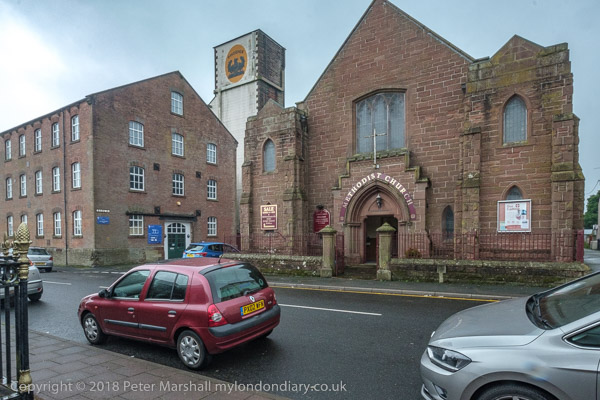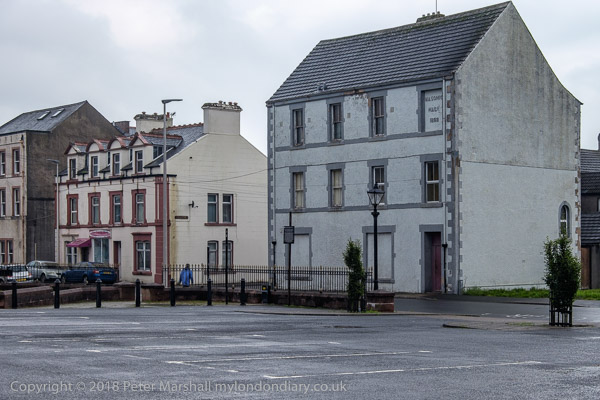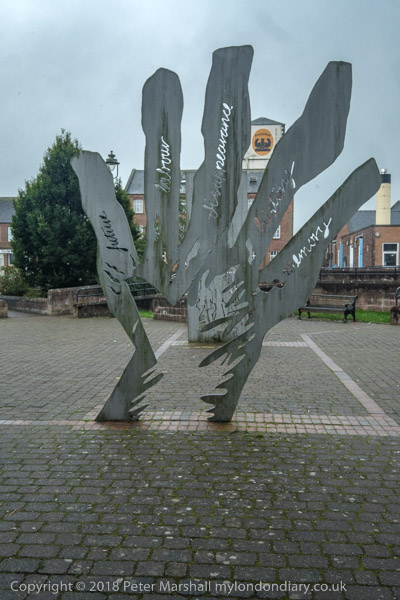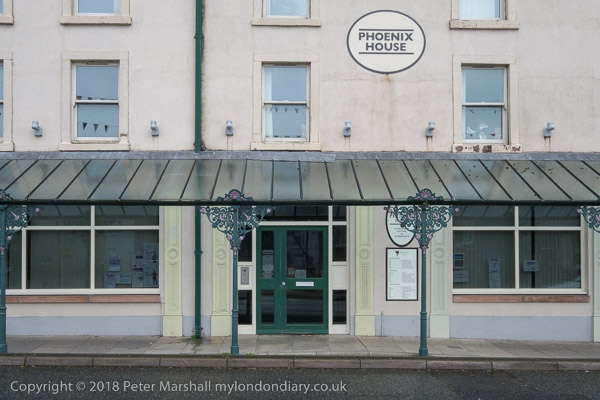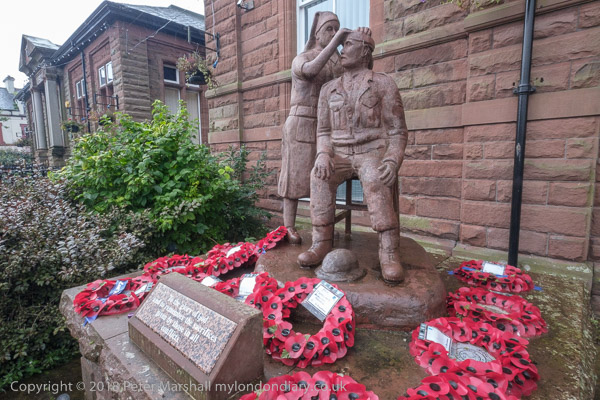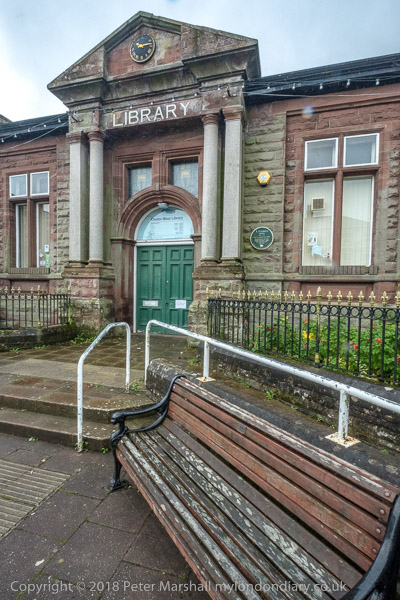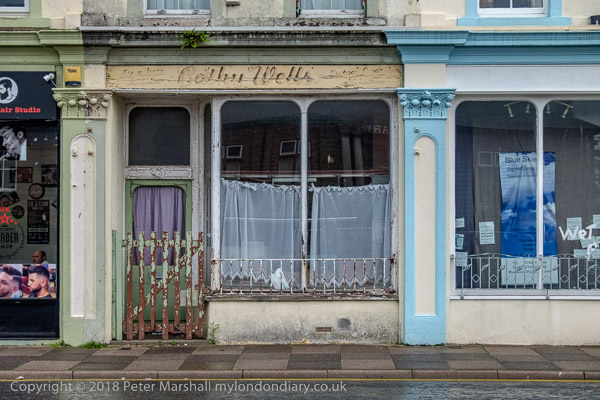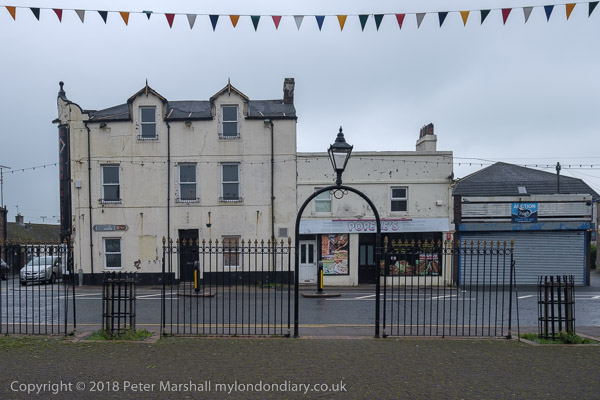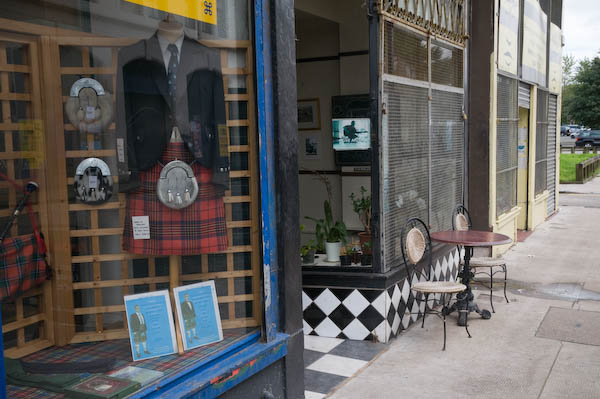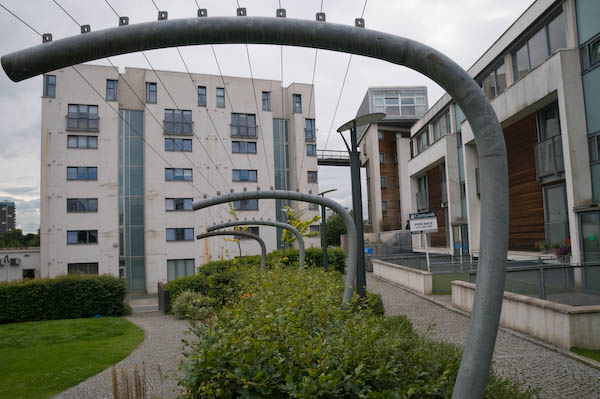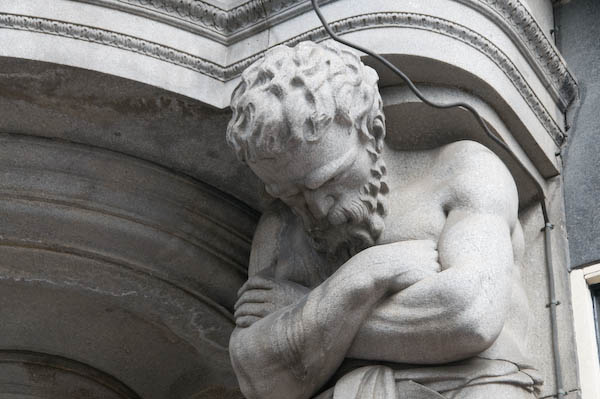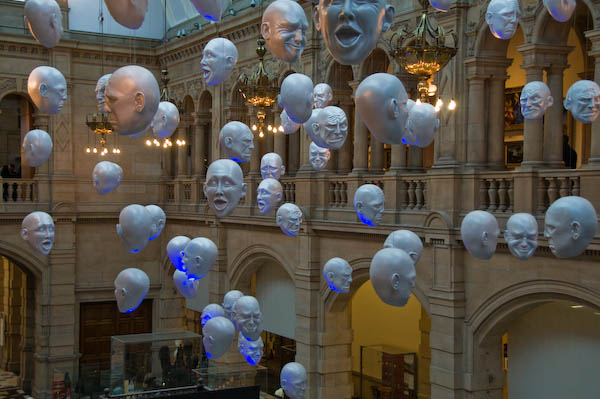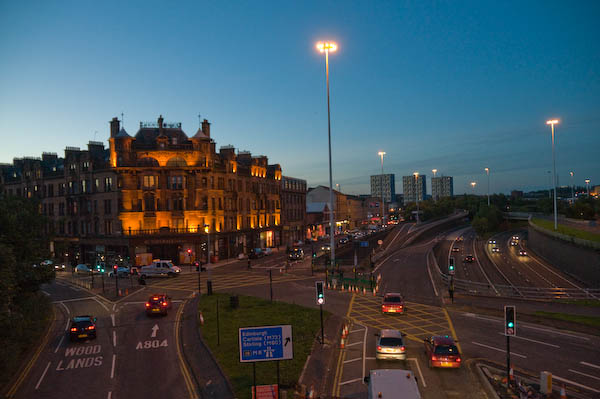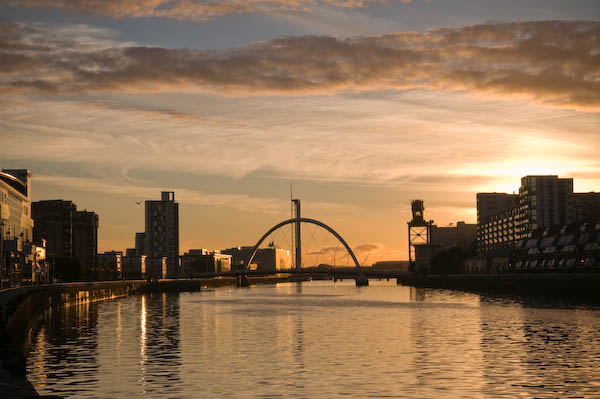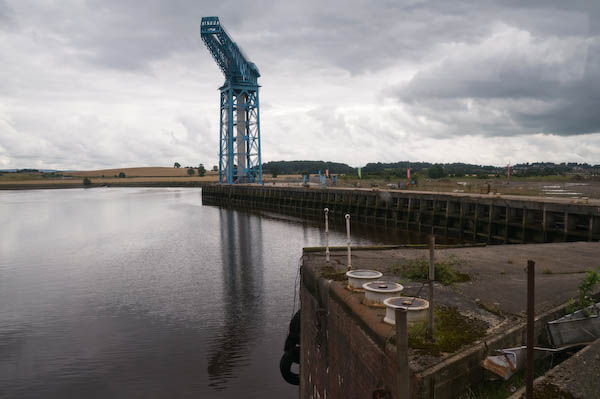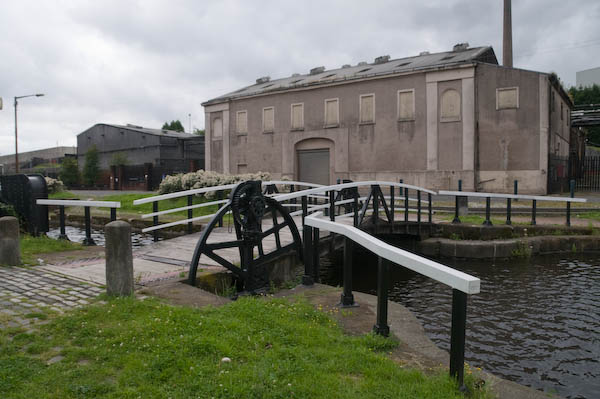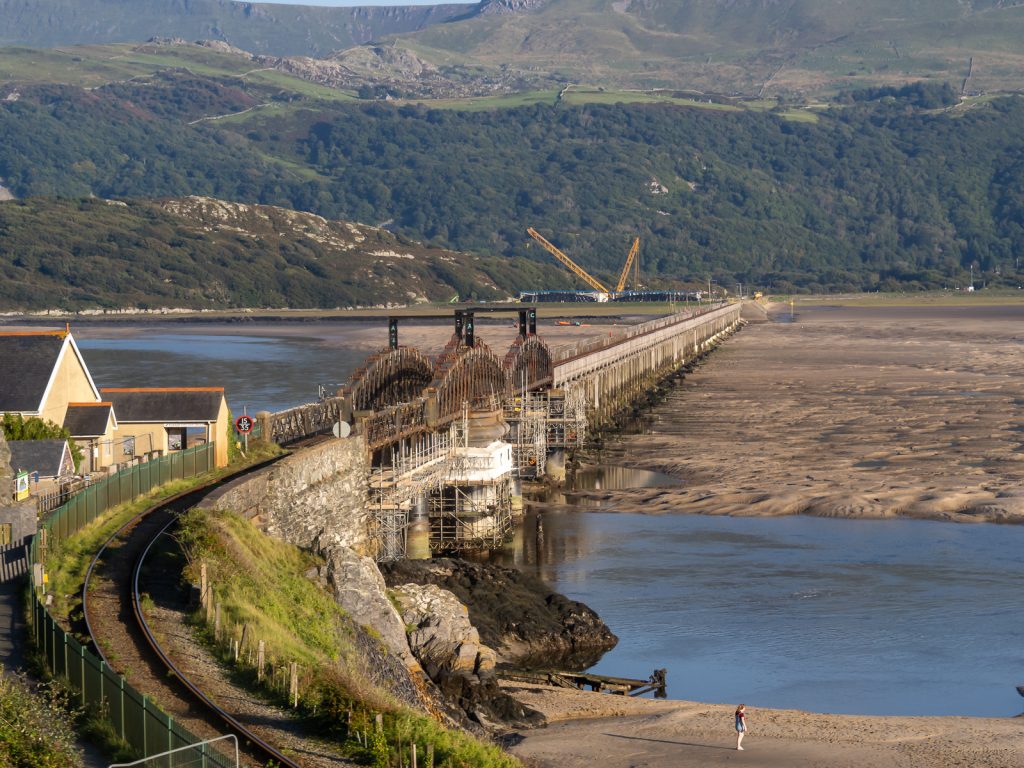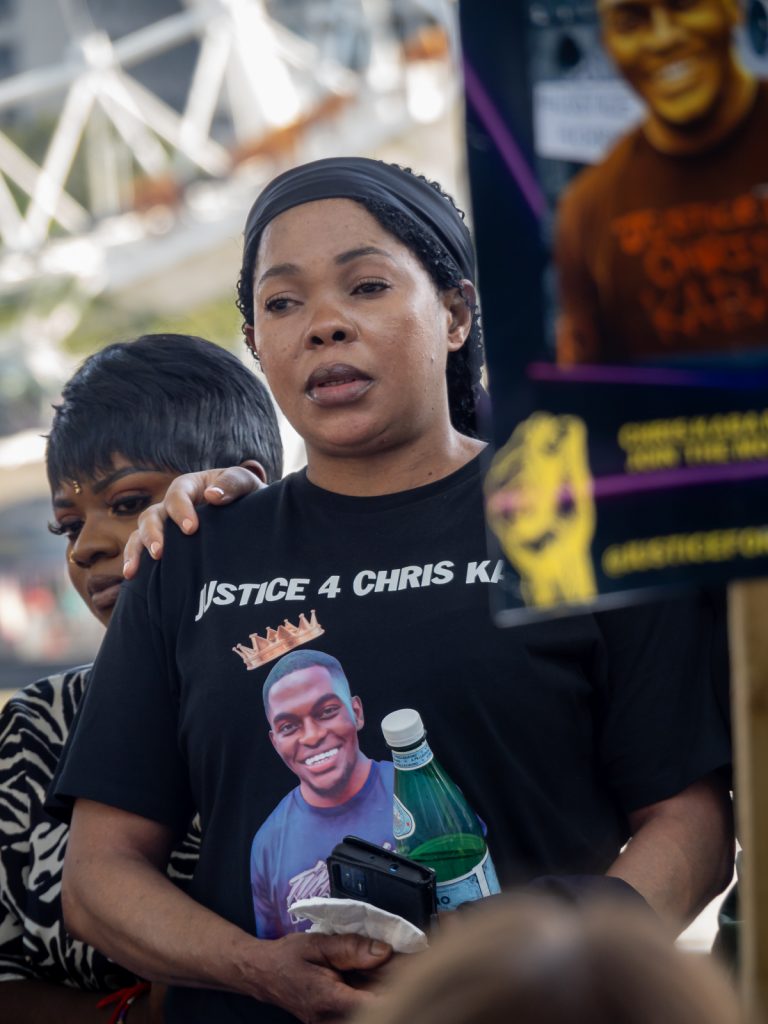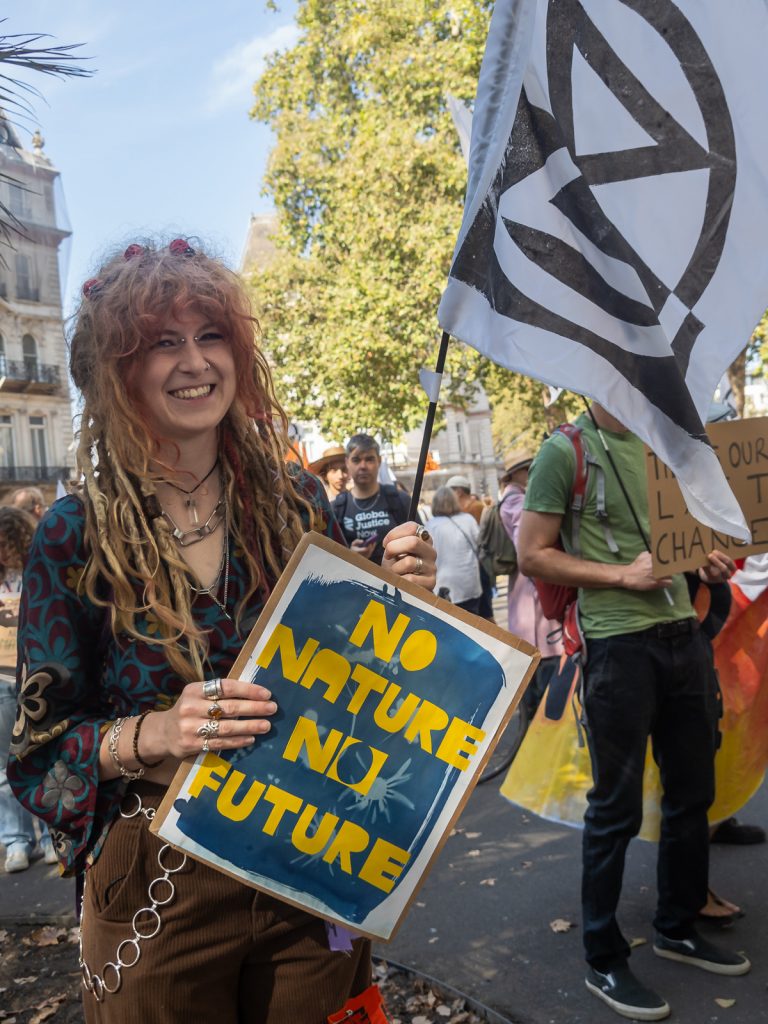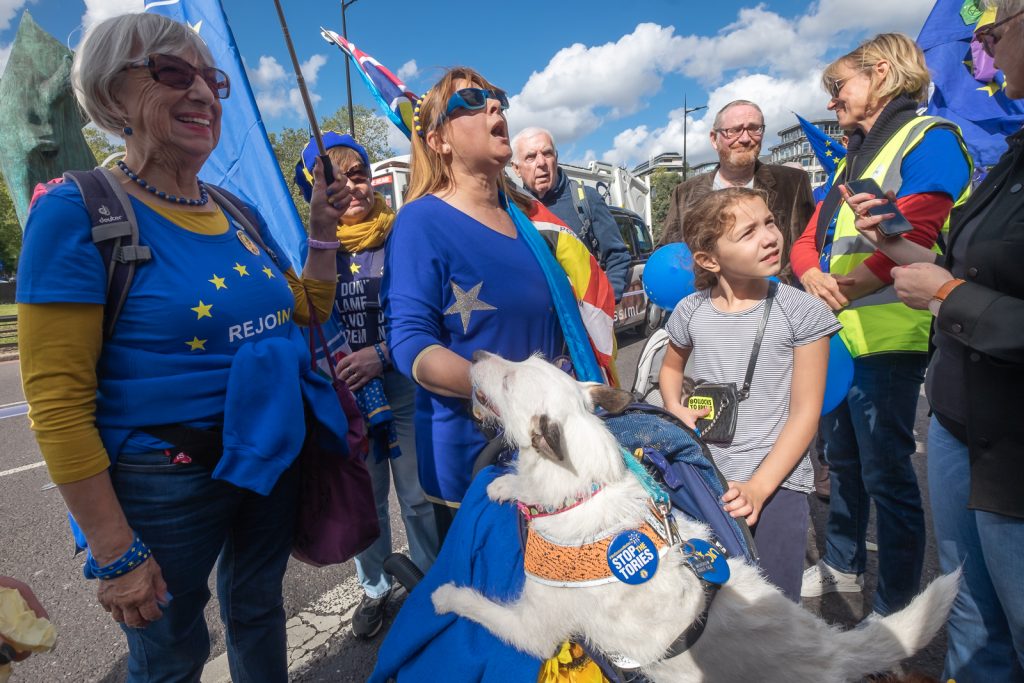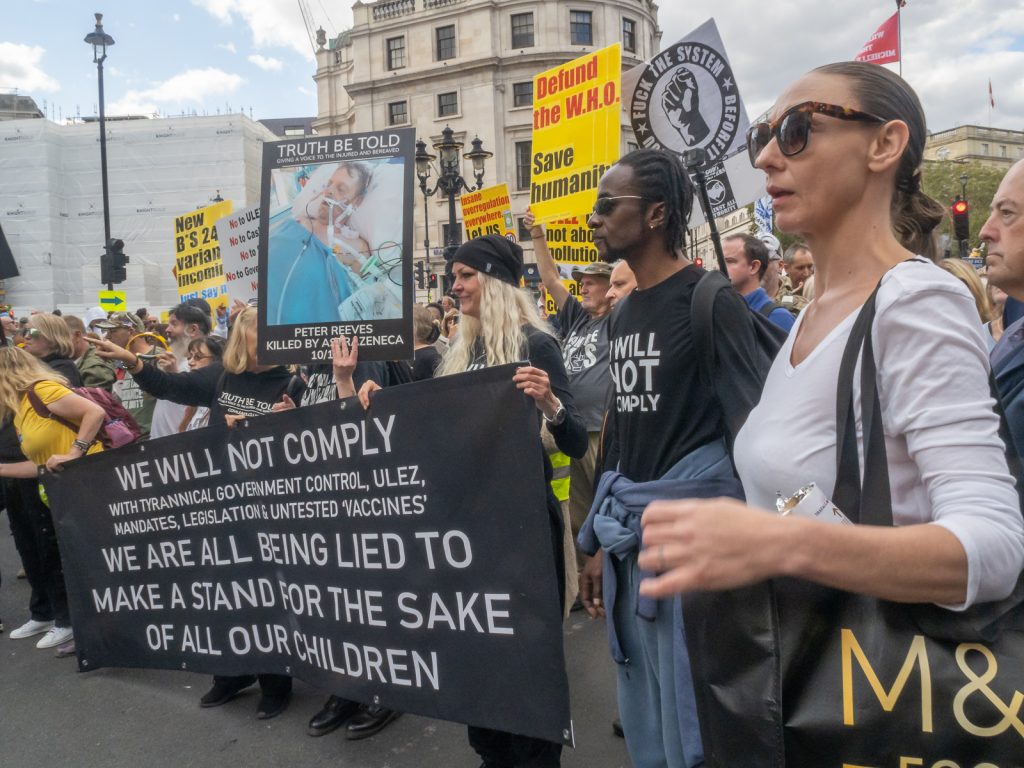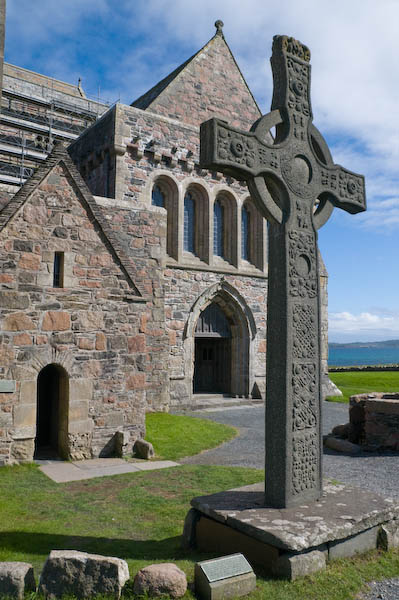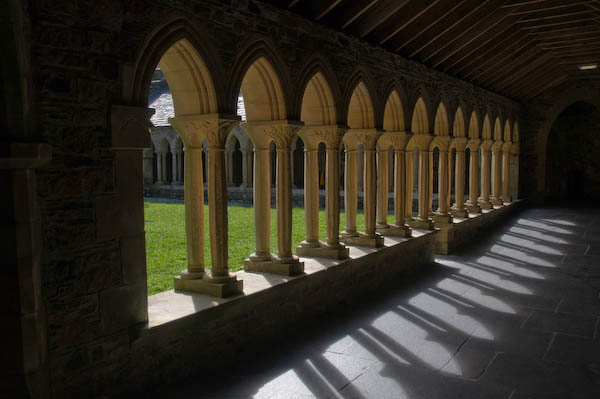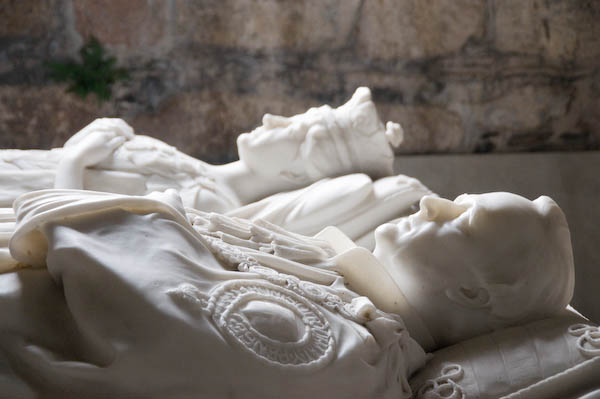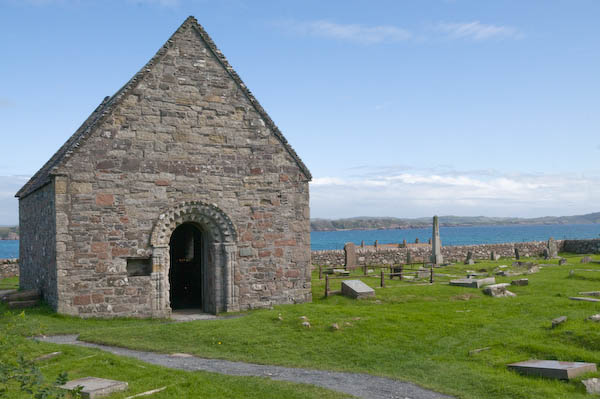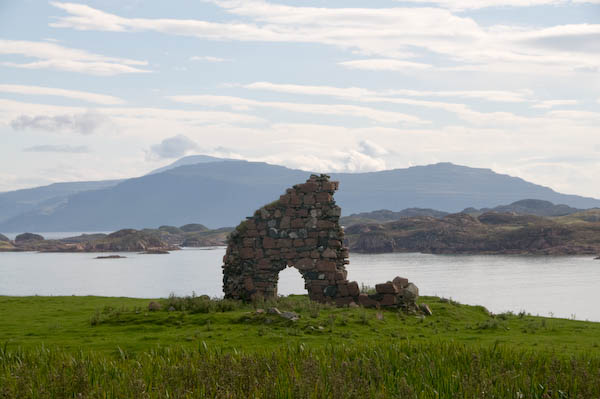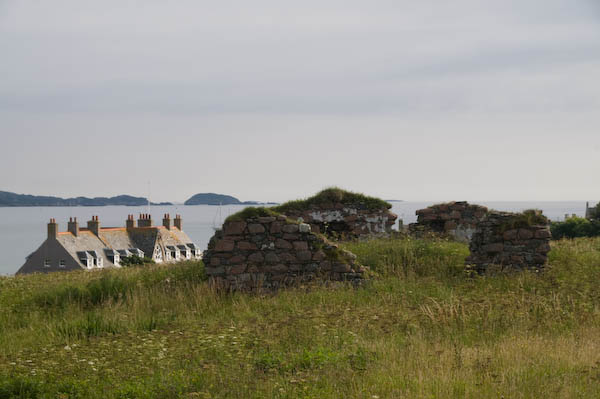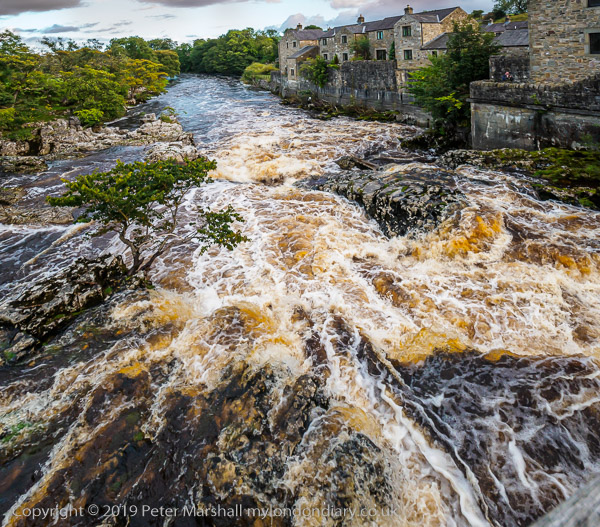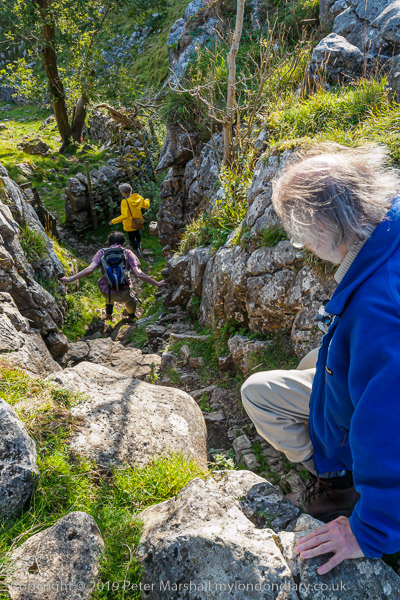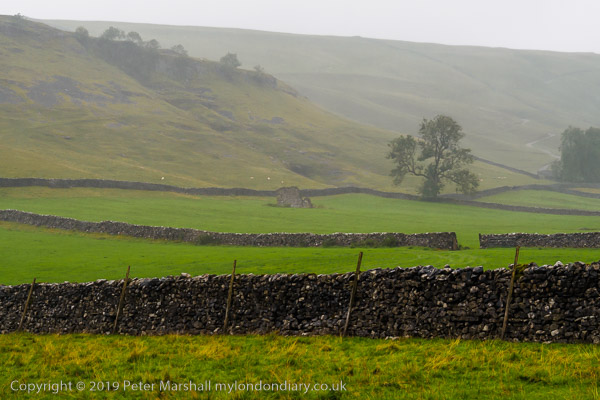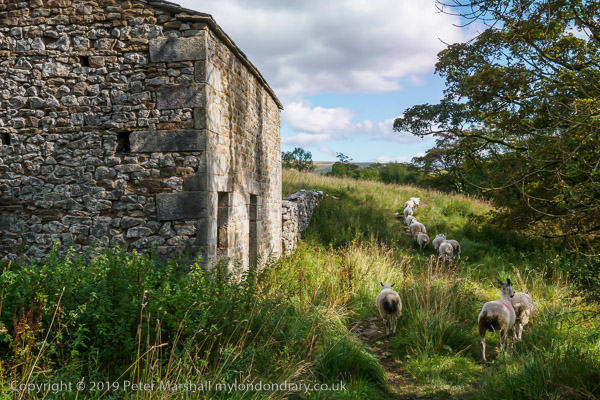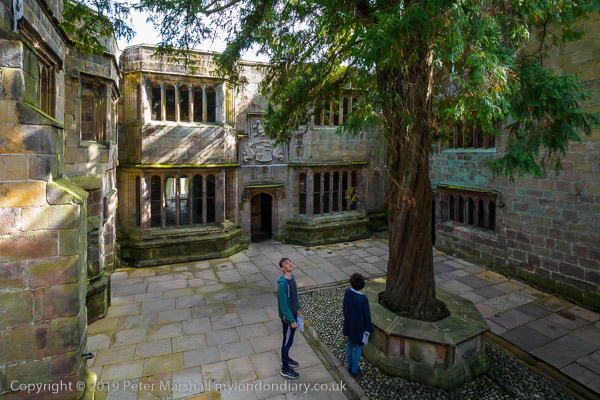Blackpool & Minwear Wood: More holiday snaps. We could have walked to Blackpool from where we were staying in Narberth. Not of course the Blackpool in Lancashire but the very much smaller Blackpool in Pembrokeshire.

It would have been a pleasant walk along country roads and through Carnaston Woods, perhaps 5 or 6 kilometres, but we wanted to go a little beyond Blackpool to Minwear Woods for a walk there, and together with the walk back would have been too much for some of us.

Blackpool isn’t a very large place. It has a bridge, Blackpool Bridge, a large house, Blackpool and Blackpool Mill. One road to nowhere very much, woods around and several footpaths including the Knights Way.
The bridge takes the Knights Way over the Eastern River Cleddau, close to the limit of the tide coming up the river from Milford Haven and at the highest navigable point of the river.

It has an inscription stating it was built around 1830 by Baroness de Rutzen; she was the daughter and heiress to Nathaniel Phillips, the owner of the Slebech estate and of Blackpool Mill. I think it may have been rebuilt then rather than entirely new though it may have replaced a ford a short way upstream.

Mary Dorothea Phillips (1797-1860) had met Charles Frederick (1795-1874), Baron de Rutzen in Rome in 1821 and they were married in 1822 in England. Later they became Lords of the Manors of Slebech, Minwear, Newton, Narberth and Robeston Wathen, and of the Manors or Reeveship of Lampeter Velfrey and Llanddewi Velfrey.
Usually described as German, de Rutzen was born in what is now Latvia and the family had extensive estates in Lithuania and you can read a great deal more about him on Geni.com, including his description of his first meeting with the charming daughter of Mrs Phillips, who was a notable pianist. After the marriage the couple lived in Brighton and London for some years, moving to Slebech Hall after Baroness de Rutzen became joint owner of the estates there as well as in Jamaica in 1830. It was a happy marriage and they had seven children.

There is no sign of a pool on either old maps of Blackpool or the current OS maps, but I think the name may come from a creek of the Cleddau immediately upstream of the bridge. The were some dramatic views of this overgrown area from the track leading to the bridge, but a footpath there was closed as too dangerous to enter.

Blackpool mill was built in 1813 on the site of a wharf and a former ironworks and is a remarkable Grade II* listed building, recently beautifully restored as a “Heritage Dining” restaurant, Black Pool Mill, by the nearby holiday park. We didn’t go inside as we had brought sandwiches which we ate at a picnic table in the woods but the restoration has retained the machinery of the mill virtually intact. Originally powered by a large waterwheel using water from a mill race coming from around a mile up-river, the waterwheel was replaced by more efficient turbine in 1903. The mill race is a feature in front of the mill which is set back from the road.

Minwear Woods are a short distance to the west on the slopes above the river and we walked around the clearly marked trail. Trees obscure any view of the river except at a recently constructed viewpoint just off the trail. A short distance to the west the view from an earlier viewpoint is now completely blocked by trees.

There are a few more pictures from this walk in the album Blackpool & Minwear Wood.
Flickr – Facebook – My London Diary – Hull Photos – Lea Valley – Paris
London’s Industrial Heritage – London Photos
All photographs on this page are copyright © Peter Marshall.
Contact me to buy prints or licence to reproduce.











